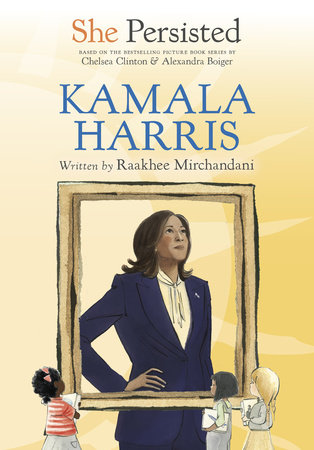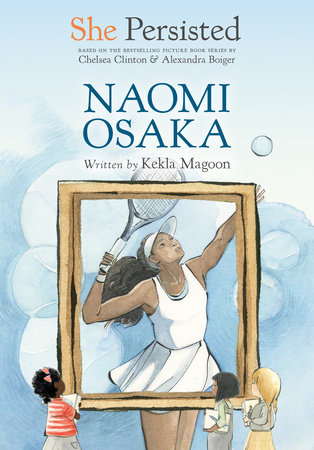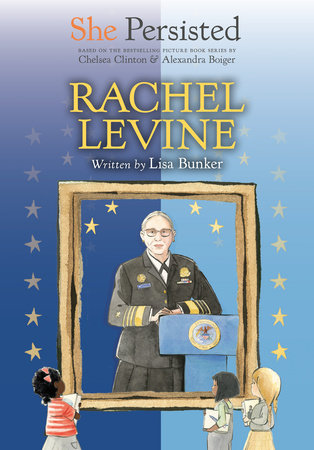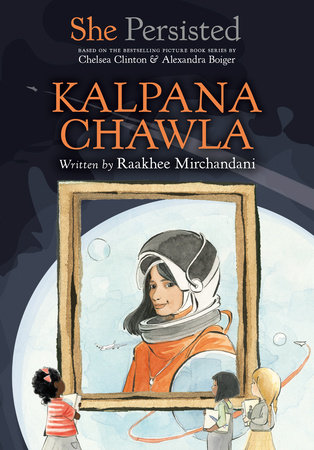Excerpt
She Persisted: Kamala Harris
Chapter 1 Truth to PowerBefore the iconic pearls and pantsuits—and before groundbreaking runs for office that would change American history and politics—Kamala Devi Harris was a little girl in California, sitting in a stroller while her parents protested in support of civil rights and freedom. Kamala learned from a very early age the importance of using your voice to spark change. She saw firsthand the power people have when they come together in support of something they believe in.
Kamala Harris was born on October 20, 1964, in Oakland, California, to Shyamala Gopalan Harris and Donald Harris. It was the same year that the Civil Rights Act was passed. The Civil Rights Act is a law that aims to make sure people cannot be discriminated against because of their race, color, religion, sex, or national origin, including in the workplace.
Kamala’s mother, Shyamala, was an Indian immigrant who moved to California for graduate school. She was a brilliant student, and she was accepted to the University of California, Berkeley, to study nutrition and endocrinology. She would later become a very respected breast cancer researcher. (Endocrinology is the study of the endocrine system. The endocrine system controls the hormones in your body, which help make your body work properly.)
Kamala’s father, Donald, was also a brilliant student. Born in Jamaica in 1938, he immigrated to America to attend UC Berkeley, too. He studied economics and later taught that subject at Stanford University. Shyamala and Donald met during a time in American history when many people were protesting against war and racial injustice. Both Donald and Shyamala cared deeply about these causes and the way Black Americans were being treated, and they spent their time learning, reading, and talking to other people who felt similarly to them, and organizing against things they thought were unfair and unjust.
The two met and bonded over their shared values and vision for what America—and their community—could be. And after they got married and had children, they made sure their daughters, Kamala and her younger sister, Maya, were a part of that fight, too.
Like her parents, Kamala knew what was fair and unfair. And when things felt wrong to her, she spoke up and did something about it.
In kindergarten, when a bully flung her friend Stacey’s clay art project to the floor, little Kamala stood up for her friend. The bully was so mad, he hit Kamala on the head. She still has a scar over one eye from that day. But Kamala knew that being an upstander, not a bystander, was important. An upstander is a person who chooses to support someone who is being harmed by standing up for them, not just watching.
“I was born a Black child in America, the child of parents who were marching and shouting, just like all the folks who have been marching and shouting,” Kamala said later in her life. “From my childhood, I was there in a stroller in the streets, marching. It’s just what I do. It’s what I believe in. I don’t know any other way.”
Music was also a big part of the Harris household. Kamala’s mom liked gospel, and she sang along to Aretha Franklin and the Edwin Hawkins Singers, especially when she cooked, something she loved to do. She would make okra, sometimes in an Indian style, with turmeric and mustard seeds, and sometimes as a gumbo with soul food flavoring, by adding dried shrimp and sausage. Shyamala had a great voice and had even won a singing award when she was in India. And as Shyamala sang at home, Kamala would join in, singing and dancing to Aretha’s version of Nina Simone’s “To Be Young, Gifted and Black.” Donald loved jazz and filled the air with tunes from Thelonious Monk, John Coltrane, and Miles Davis.
Like Shyamala, Kamala’s maternal grandparents—her mother’s parents—believed in participating in political and social change in their community. Her grandmother, Rajam Gopalan, took care of women in her village and educated them about women’s health issues. She also was known to speak up about abuse against women and in support of women’s healthcare, even if it meant calling their husbands and telling them to “shape up.” Kamala’s grandfather, P. V. Gopalan, was part of India’s independence movement and became a senior diplomat in the Indian government. Rajam and P. V. even moved to Zambia for a time to help settle refugees. Serving people and their communities was a big part of the Gopalan family’s values, ones that would shape Kamala’s life for decades to come.
“My mother inherited my grandmother’s strength and courage. People who knew them knew not to mess with either. And from both of my grandparents, my mother developed a keen political consciousness. She was conscious of history, conscious of struggle, and conscious of inequities,” Kamala said. “She was born with a sense of justice imprinted on her soul.”
When Kamala was seven years old and Maya was just a toddler, their parents got divorced. The girls lived with their mother in East Bay near San Francisco and spent weekends and summers with their father in Palo Alto, also in the Bay Area. They visited their father’s family in Jamaica and their mother’s family in India. The Harris girls were surrounded by friends, relatives, and chosen family, who built their strong sense of identity.
At Thousand Oaks Elementary School, Kamala was in Mrs. Wilson’s first-grade classroom. It wasn’t until years later that Kamala learned her school was part of a national experiment in desegregation. Desegregation meant that kids from Kamala’s mostly working-class Black neighborhood took the bus to go to school with kids in wealthier, white neighborhoods—and sometimes the other way around—in an effort to make the school populations more diverse. After school, while Shyamala was still at the lab working on important research, the Harris sisters would head over to the Sheltons’ house for an after-school program. The warm home—with posters of Frederick Douglass, Sojourner Truth, and Harriet Tubman on the walls—left a lasting impact on Kamala. Mrs. Shelton was a mother figure to Kamala, too.
Once, Kamala spent an afternoon baking lemon bars. They looked picture perfect, and she couldn’t wait to show them off. She proudly brought them over to share with her mom, Mrs. Shelton, and another neighborhood friend who they called Aunt Bea. They were having tea together. But Kamala realized something wasn’t right when Mrs. Shelton’s lips puckered.
“Mmmm, honey,” Mrs. Shelton said. “That’s delicious . . . maybe a little too much salt . . . but really delicious.” Kamala had mistakenly used salt instead of sugar! But instead of feeling like a failure, Kamala knew she had done a great job; she had just made a mistake. And her confidence continued to grow.
Kamala’s bond with her mother was also growing stronger every day. Shyamala’s strength, leadership, toughness, and work ethic inspired her daughters. She was a mama on a mission: to raise two confident and proud Black daughters and to help end breast cancer.













